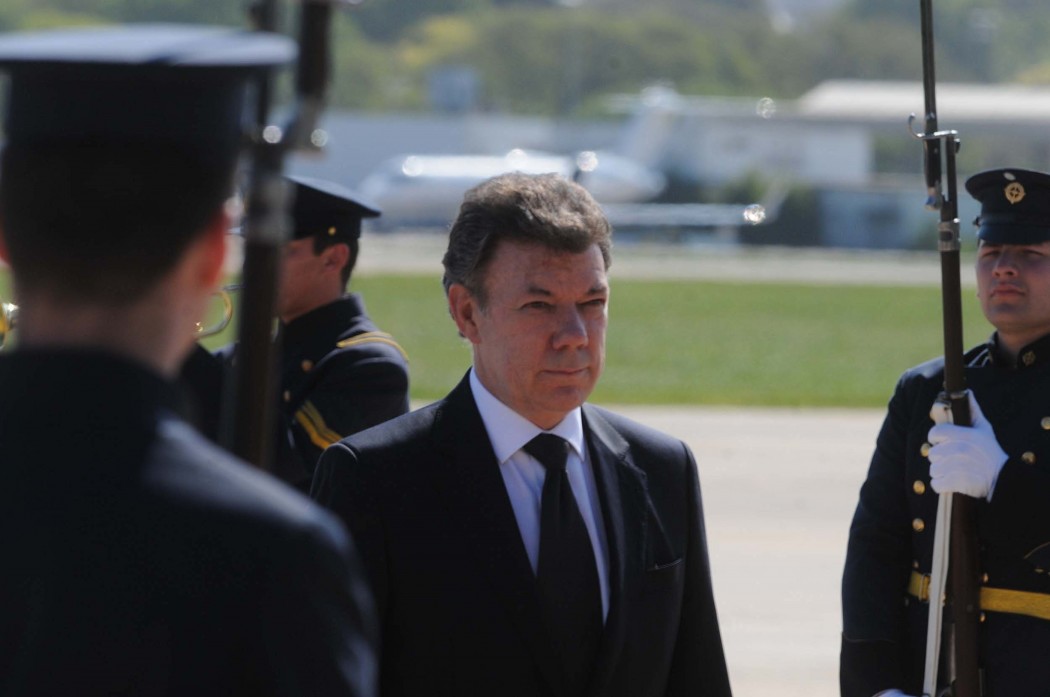By Alejandra Barrs
After 52 years of seemingly interminable violence with the Revolutionary Armed Forces of Colombia (FARC), a rebel guerrilla group, one would think Colombians have had enough of the warfare haunting their lives. In short, the Colombian conflict is a political war for greater influence in the country between the Colombian government, various armed forces including right-wing paramilitary groups, FARC (a Marxist-Leninist guerrilla faction), and ELN (another communist guerrilla group). Throughout the conflict, FARC has taken tens of thousands of lives and has been responsible for countless kidnappings, dangerous drug trafficking and the displacement of many innocents. Every Colombian person has directly or indirectly been affected by this war.
In 2014, the current president Juan Manuel Santos swore that he would make peace with FARC. It was this declaration that won him his reelection. The announcement of the recent referendum on the peace agreement was proof of his promise kept. The world rejoiced at the imminent end of terror from FARC in Colombia. Newspapers and other media outlets worldwide praised Santos for his success in negotiating with a group that hadn’t buried the hatchet with any of his predecessors, and polls confidently predicted the victory of the ‘yes’ vote. Colombians were finally getting what they had been hoping for all along.
So why was the peace deal rejected? Winning by the slimmest of margins, the ‘no’ votes triumphed with 50.2% compared to the 49.8% that voted for the agreement. Why were citizens so divided on peace?
Perhaps it is because this deal wasn’t a simple shaking of hands between two parties that agreed on a common goal, but more of a costly buy-out. Conditions of the agreement contend that former fighters of the guerrilla group would receive an income from the government, who would essentially be making monthly payments to FARC to put down their weapons; which would be made financially possible by increasing the taxes of Colombian citizens. Many people simply could not rationalize the referendum’s stipulation that they hand over their hard-earned money to a group that has caused years of fear and disharmony. Others were willing to sacrifice higher taxes for the promise of a safer future.
On that account, the media’s use of the word ‘peace’ as a blanket term simplified the entire deal. The majority of international reports on the referendum failed to mention the terms of the agreement and their significance on the lives of Colombian citizens, which impedes on outsiders’ understanding of those who voted no. Colombian citizens were left with a choice that is much more complex and cannot be boiled down to a vote for or against peace.
If the deal prevailed, the government would fight against narco-trafficking and would implement a plan for rural reform and a bilateral ceasefire. On the other hand, they would also allow FARC to become a legal political party, legitimizing their autonomous power. They would create a specialized security protection program for members of FARC’s party (which would rely on support from international organizations), and penalize those who attempt to prevent it. Amnesty would be granted to many criminals who have committed vicious crimes. For Colombians, unconditionally absolving violent wrongdoers after years of wrongdoings is undoubtedly a hard pill to swallow.
It is in this respect that criticisms of Santos take form. Those who oppose him have questioned the lengths the president will go to in order to keep his promise and achieve peace with FARC. He negotiated a potential ceasefire, but only by asking Colombians to sacrifice a great deal for a group they detest.
Although referendums are inherently problematic in their oversimplification of complex policy (among other reasons), this one was especially dangerous because it had the potential to solidify a deal with a dangerous group, subsequently putting Colombians in an extremely vulnerable position. Santos’ efforts should be commended, but it is important to note that he offered FARC something irresistible, so good they couldn’t refuse. Members of my own family, living in Colombia, have voiced the opinion that they are terrified that with a hard-core communist party in government they might soon experience what is happening in Venezuela. Since their neighbouring country’s disaster is far worse than what they’ve been experiencing from FARC rebels, those who voted no are not saying no to peace, but no to a greater fear – that things might actually get worse before they get better.
On Friday October 7th, Santos was given additional international media attention when he was awarded the Nobel Peace Prize “for his resolute efforts to bring the country’s more than 50-year-long civil war to an end.” Despite the awkwardness of receiving an award for a failed peace deal, it is a chance to keep up the momentum of the peace process, and the failure of the referendum is leverage for the government, an opportunity for improvement. Santos’ efforts are not in vain, despite the ‘no’ vote; the two parties really seem ready to end the fighting. However, they must revise the terms, and present Colombians with more tolerable conditions. If they do, the people of Colombia will be more than willing to move on from the past for the sake of the future. As per the nature of referendums, this one boiled down a complicated peace deal to a single yes/no vote, and the media further simplified it by equating highly questionable and complex terms with the idea of peace.
Despite what it may look like, Colombians who voted against the deal were not saying no to peace, they were saying no to reconciliation.








